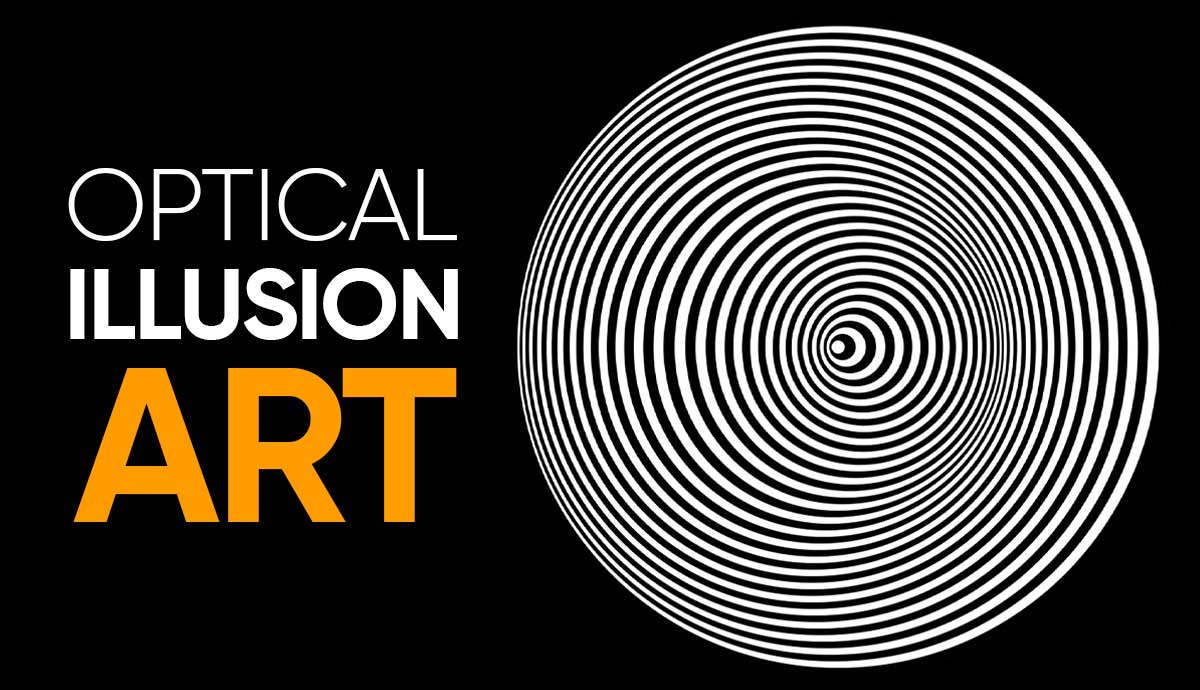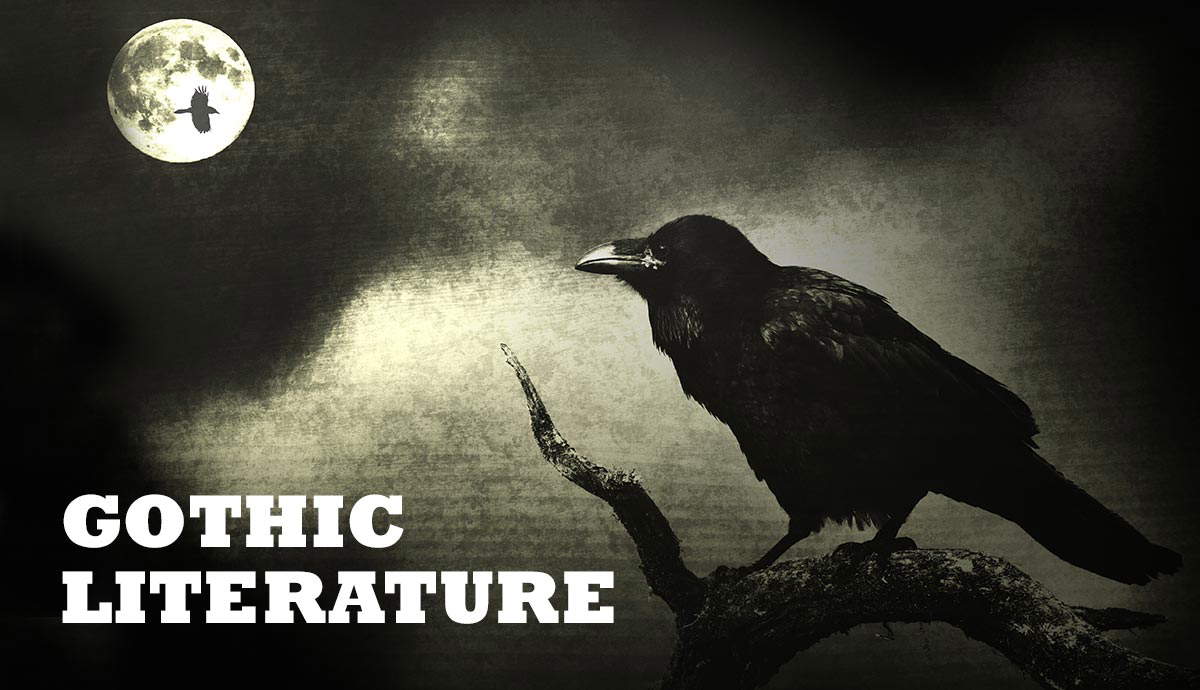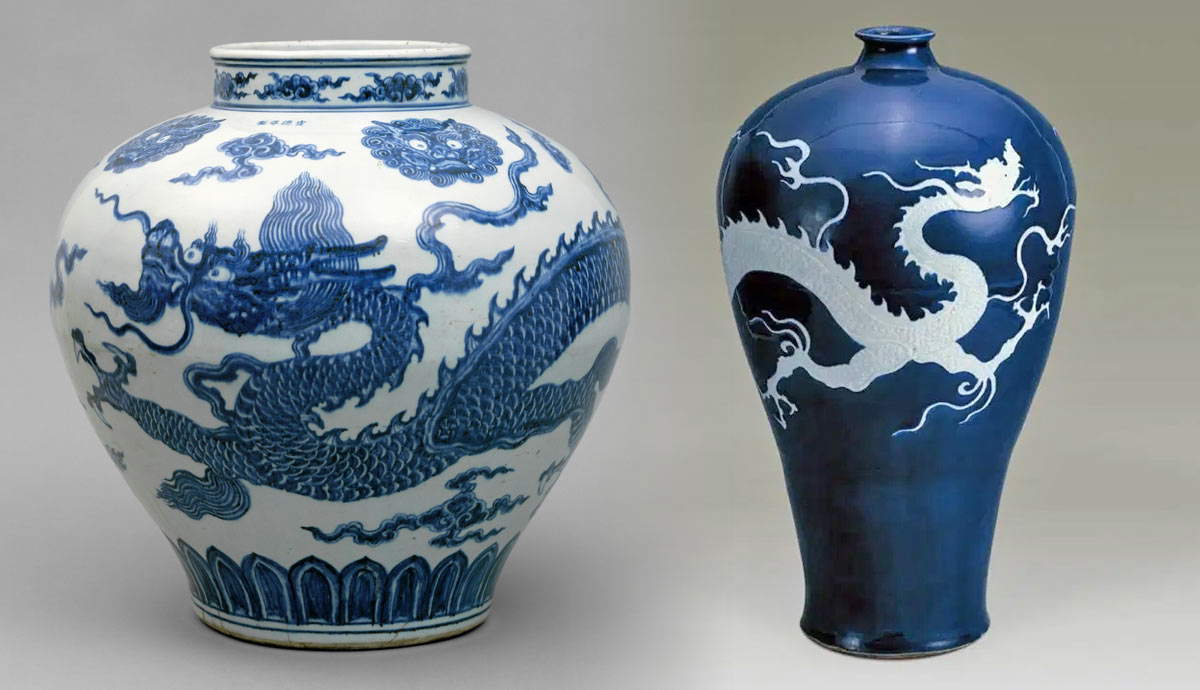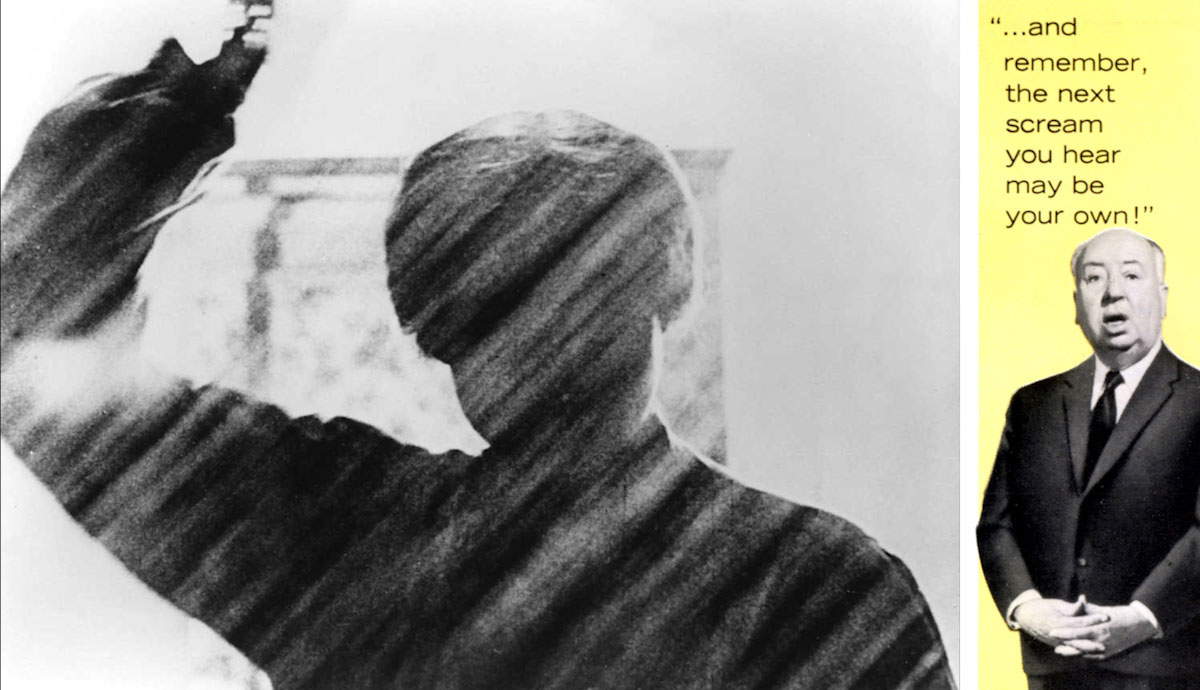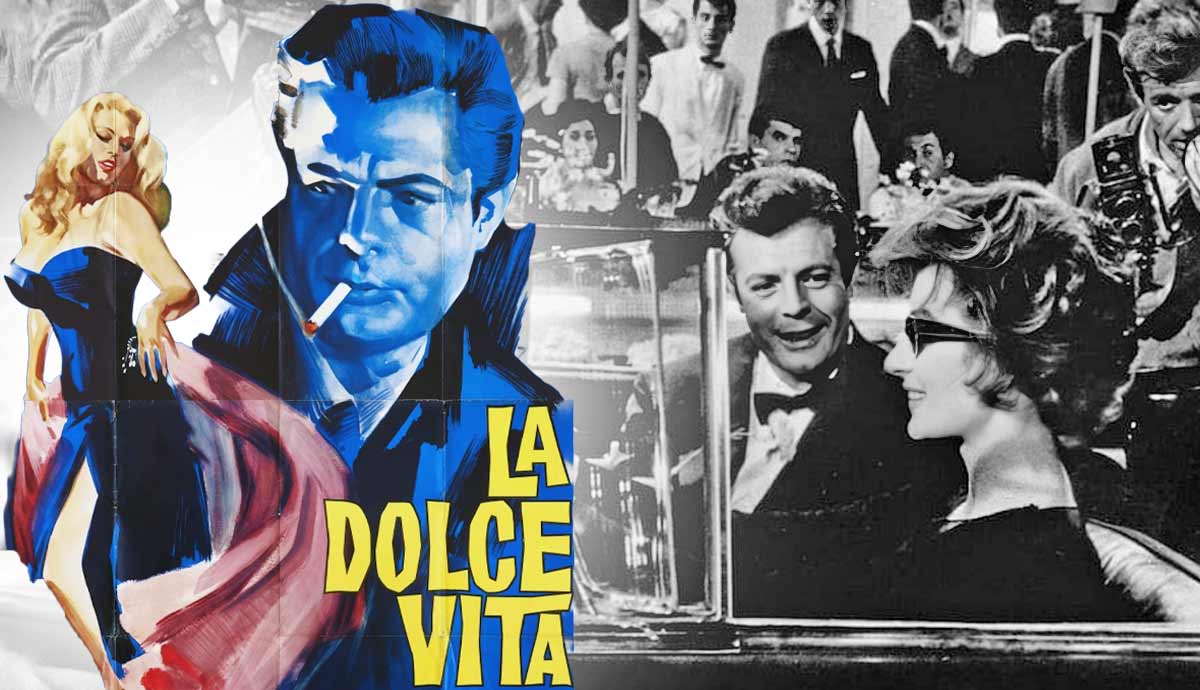
One of the most famous and influential films of postwar Italian cinema is La Dolce Vita (1960) by the director Federico Fellini (1920–1993). Despite the contrasting interpretations, the expression “dolce vita” continues to evoke the cultural icon of “made in Italy” originated from the carefree Italian lifestyle, dedicated to worldly pleasures and populated by elegant aristocrats represented in Fellini’s film. Let’s explore the origins of this concept, starting from the context of the movie and its contribution to the spread of the image of Roman and Italian glamor.
Behind La Dolce Vita: Italy in the Late 1950s

The title of Federico Fellini’s movie La Dolce Vita might quote Charles-Maurice de Talleyrand-Périgord’s expression douceur de vivre, which refers to the sweetness of living typical of the aristocrats during the Ancien Règime before the French Revolution. But what does it mean in Fellini’s movie?
We must see Fellini’s La Dolce Vita (released on February 5, 1960) through the lens of the Italy of the late 1950s, in the context of the economic boom of the post-war years, benefiting from the funds of the Marshall Plan. It is the Italy of reconstruction and modernization, where the traditional Catholic culture is placed in direct exchange with the new artistic trends and global industries. Fellini’s La Dolce Vita is a portrait of Rome in the late 1950s–early 1960s in the middle of the contemporary socio-economic transformations.

During the “economic miracle,” the Italian Capital became the center of a lively social life of aristocratic and intellectual circles animated by artists, philosophers, and writers who used to meet in bars, clubs, parties, exhibitions, and lounges in Rome’s historic sites of Piazza del Popolo and Via Veneto. “Stock characters” animated the luxurious Roman landscape, made up of newly rich, bohemian artists, directors, actors, playboys, dancers/strippers, and freelance photographers working for popular tabloids in search of the cover scoop, who, after the name of a character in La Dolce Vita, would become known as “paparazzi.”

New mass industries and technologies flourished, radio, television, and cars such as the Fiat 500, Fiat 600, and Giulietta, the iconic Vespas (already famous in Roman Holiday, 1953 with Gregory Peck and Audrey Hepburn), and Lambrettas gave a new rhythm to Italian life. At the same time, Roman fashion houses became protagonists of the global scene thanks to their popularization by the cinema. Rome was home to the famous Cinecittà studios, which made it the “Hollywood of the Tiber,” the setting for both Italian and American blockbusters.

Contemporary scandalous news stories and political and religious dynamics influenced Fellini. For example, the film refers to the case of Wilma Montesi, a 21-year-old girl who mysteriously died and was found on the beach of Torvaianica in 1953—a death that the tabloids linked to prominent political figures of the time, such as the pianist Piero Piccioni, the son of Deputy Prime Minister Attilio Piccioni (close to the Prime Minister Alcide De Gaspari, Democrazia Cristiana), who resigned after the scandal.
These aristocratic and high-profile local and international figures populated the sexually “immoral” and vicious Roman nightlife in luxury houses of the time, typically condemned by the political party in power Democrazia Cristiana (DC, Christian Democracy). The trial, partial testimonies, and sensational revelations of nobles, actors, paparazzi, and adventurers agitated the press and the art galleries of Via Margutta, and the clubs of Via Veneto.
The Plot of “La Dolce Vita”

The story is built around the character of Marcello Rubini (Marcello Mastroianni), who, despite being an aspiring writer, is a journalist for a tabloid newspaper. Because of his profession and his acquaintance with high society, he moves around the jungle of mundane nightlife of Via Veneto, looking for gossip and celebrity shots with his paparazzo.
Several female characters surround the charming Marcello: Emma (Yvonne Furneaux), who is Marcello’s girlfriend, Maddalena (Anouk Aimée), a rich but bored Roman aristocrat, and Sylvia (Anita Ekberg), an American actress who has come to Rome to shoot a movie. Other central characters are the new-age intellectual Steiner (Alain Cuny) with his family and Marcello’s father, who comes to visit him from the province (Annibale Ninchi).

The film can be divided into seven scenes, starting from the first, in which a statue of Jesus Christ is transported by helicopter in the sky from Rome to the Vatican. Marcello then meets Maddalena, they go away together in her car, she confesses her existential unrest in Piazza del Popolo, and they make love in a sex worker’s house. Marcello returns home the next morning to find Emma, who is jealous, emotionally fragile, and attached to her home, has overdosed. He takes her to the hospital, where she is cared for by nuns.

Then, the beautiful and spontaneous American star Sylvia arrives by plane in Rome surrounded by paparazzi, she visits Saint Peter’s dome and Marcello brings her around Rome that night after escaping from her drunk boyfriend. Marcello confesses his love for her in the Trevi Fountain. After this, in the church of San Giovanni Bosco, Marcello meets an esteemed friend Steiner, an intellectual who plays Bach at the organ and supports Marcello in pursuing his aspiration to write his book.

Then we see two children pretend to have had a vision of the Virgin Mary, and a crowd of believers looking for alleged miracles and journalists, like Marcello with Emma, crowd into the Roman suburbs, turning the “miracle” into an instrumentalized and empty spectacle, working to manipulate the superstitious simple-minded.

A party at Steiner’s house gathers a series of cosmopolitan intellectuals, poets, artists, and musicians, who urge Marcello to write his book clearly and without lies and tell Emma that she loves Marcello more than herself. Steiner, however, seems restless with the passage of time and the future of his beloved children.

After this, Marcello tries to write his book in a restaurant on the beach, but he is too distracted, and he talks to the young angelic waitress Paola. She continues humming the song “Patricia” and confesses that she misses her land, Umbria. Marcello’s energetic father arrives unannounced to see his son and have some fun with him. They go to the Cha Cha Cha Club, between melancholic and exuberant performances, and Marcello’s father agrees to go home with Marcello’s friend and Charleston dancer Fanny (Magaly Noel), but he feels ill and takes the first train home. In reality, Marcello’s father has always been absent and away from home, where his devoted and faithful mother continues to wait for him.

After this, brought by Nicolina (Nico), Marcello attends a party in an ancient Roman villa in Sutri, the sweet background of decayed aristocrats who amuse themselves with games and conjuring ghosts. On this occasion, Maddalena confesses her love for Marcello but then disappears.

Marcello has a discussion with Emma, who is exhausted by Marcello’s betrayals and would like to have a stable life with him. Marcello leaves her in the countryside until the next morning. The next morning, Marcello receives a call that Steiner has committed suicide. After this disillusionment, Marcello gives up his aspirations and his career as a journalist and in advertising.
At a party full of showmen/girls at Riccardo’s (Riccardo Garrone) beach villa in Fregene to celebrate Nadia’s (Nadia Gray) divorce, the drunk and cynical Marcello, who has given up his journalistic and literary ambitions to work as a publicity agent, pushes the party into debauchery, urging his newly divorced friend Nadia to start her new life with a striptease on Perez Prado’s cha-cha “Patricia” and trying to turn it into an orgy.
At dawn, the partygoers go to the beach, where a fisherman has found a swollen leviathan. Marcello sees the angelic young waitress Paola, whom he met at a seaside restaurant when he was trying to write his book. She invites Marcello to join her, but he does not recognize her and hears her words muffled by the sound of the sea and the wind. He is finally taken away by another partygoer.
The Imaginary Rome of “La Dolce Vita”

In the 1950s and 1960s, Rome attracted foreign and Italian filmmakers, identifying itself as a place of artistic creativity, becoming a city, a trope, and a “dream spectacle,” a place where people from outside, like Marcello, hoped to participate in the bustling life of the city. During its rebirth on the world stage, Rome was associated with modernity and beauty as one of the most attractive places for foreigners, especially those linked to the film industry. It became a tourist destination full of glamor, art, and beauty thanks to two cultural industries: fashion and cinema.
Cinema acts like a “magnifying lens” on reality, highlighting and sometimes distorting it to emphasize imagined elements. In particular, popular culture—including fashion, film, and photography—has been shaped by how America has influenced the way we perceive symbols, spaces, and experiences, blending imagination with reality.
Fashion, as seen and felt through cinema, plays a key role in modernization during important cultural, political, and economic changes. It contributes to shaping identity and helps create a kind of “map” of the world—one that organizes places by desirability. This visibility makes fashion a powerful tool in promoting consumption, tourism, and economic growth by turning certain locations into symbols of aspiration and style.

The papal city has always been the origin of the foundational myths of the Roman Empire, Italy, and the Eurocentric vision of superior religion and civilization built around Christianity, as well as a necessary stop on the journey of any artist or European gentleman making the Grand Tour. It was a perfect place for romanticizing narratives and creating symbols of national identity. As suggested by Eugenia Paulicelli, fashion allows cities to acquire a mark of distinction that attracts tourism, capital, and business.
After World War II, Florence emerged as the new capital of Italian fashion, replacing Turin, which had held that role during the Fascist regime. Beginning in 1951, the Sala Bianca fashion shows played a key role in this shift. Organized by Giovan Battista Giorgini, these events brought together Italian designers, international journalists, and buyers from American and European department stores. Set against the backdrop of Florence’s Renaissance beauty and rich history, the shows helped launch Italian fashion onto the global stage, offering an alternative to the dominance of French style.

After the end of World War II, Americans began spending more time in Italy, especially for film production at the Cinecittà studios. Meanwhile, fashion houses established themselves in strategic locations—such as the Fontana sisters near Piazza di Spagna and Gattinoni on Via Veneto, close to the American Embassy—fostering a strong connection between glamor, cinema, and the city of Rome.
Movie stars were drawn to these Roman fashion houses not only for their elegant designs but also for the warm, intimate atmosphere of the fitting rooms, which became like private salons. Celebrities such as Audrey Hepburn, Ingrid Bergman, Ava Gardner, Gregory Peck, Cary Grant, and even the U.S. ambassador to Italy, Claire Booth Luce, helped promote the allure of “Made in Italy” through media and popular culture, boosting the global status of Italian fashion.
Rome played a leading role in shaping trends and defining good taste, even influencing men’s fashion. Traditional, rigid suits began to soften, embracing the body with finer fabrics and expert tailoring, which redefined masculinity with a more refined and stylish edge.

La Dolce Vita epitomized the shift from Florence to Rome as the capital of chic and vibrant nightlife. Rome became the center of the alta moda, set in the city’s theatrical architecture of palazzi, gardens, ruins, and vehicles identified with the Italian aristocratic lifestyle. The reciprocal creation of an “export image” of a modernized Rome was further fueled by the 1960 Olympic Games, which attracted foreign press. Photographers such as William Klein created reports for magazines like Vogue and Harper’s Bazaar. In particular, Klein’s photographs celebrated Italian houses such as Capucci, Simonetta, Fontana, and Galitzine.
Paying attention to the aesthetic process of photography and film, Klein and Fellini gave additional meanings to the details gathered from reality, triggering fantasy and dreams. In this way, even the city’s fascist past comes back in citations that form a refashioned masquerade, a grotesque farce (see Fellini’s Roma, 1972 or the last party scene of La Dolce Vita). At the same time, the fantasized Rome also has characterized the real experience of the city itself, subjecting it to a metamorphosis and revealing its intimate and hidden truths, blurring the separation between the lived and the imagined Rome.
Fashion in La Dolce Vita becomes a surrealist reflection of Catholic rituals and institutions. Sylvia arrives in Rome wearing a priest-like outfit inspired by the Fontana sisters’ 1955–56 winter collection—the pretino dress, previously worn by Ava Gardner in 1955. At the same time, Fellini portrays “religious miracles” as staged media spectacles—empty of true spirituality and used as theatrical devices rather than sacred experiences.

Every suit worn by Marcello in the film is designed by Brioni, the Italian fashion house based on Via Barberini 79 in Rome since 1945. Brioni introduced a form-fitting silhouette that blended traditional masculinity with a touch of feminine elegance. In the 1950s, Brioni’s Roman style became a hallmark of men’s fashion, showcased in the Sala Bianca shows. The brand gained international recognition in 1952 when New York’s B. Altman department store commissioned Brioni to create evening jackets in black shantung and colorful velvet, which were prominently displayed in its Fifth Avenue windows.
This transatlantic encounter between Italy and the United States gave Italian fashion not only industrial momentum but also global visibility. Cinema, in particular, served as a powerful platform to elevate fashion into the public eye. In La Dolce Vita, Marcello wears the iconic Brioni continental suit throughout the film—except at the end, where he appears in a white party suit paired with a black shirt and foulard. This color reversal transforms his look into a more bohemian version of his former self, symbolizing a deeper shift in identity.
Costume in Fellini’s films is never incidental. It plays a crucial role in shaping characters, constructing meaning, and reflecting inner transformations. From his debut film The White Sheikh (1951), Fellini explored the emotional and social dimensions of clothing—connecting it with themes of appearance, ritual, and religion. His work often blurs the line between the sacred and the profane, using costume to stage a doubling of identity and a mise-en-abîme of reality itself.
The Deeper Meaning: The Reactions & Controversial Interpretations

Even though La Dolce Vita presented Italy as a symbol of newfound freedom and the possibility of happiness—deeply influencing the collective imagination—the film is, in fact, a critique. Fellini uses it to denounce the empty lifestyle of certain social classes and to question the ambiguities of popular religiosity. In a statement published in Il Giorno on February 10, 1960, Fellini clarified his intention:
“I hope that those who say ‘enough’ are saying it to la dolce vita and not to my movie. In this case, I completely agree—in fact, the movie wants to say ‘enough’ to la dolce vita […]. On the other hand, I have to say that I am comforted by the fact that in some very advanced and intelligent Catholic circles (circles that I respect and that I consider ‘responsible’), my film has been liked and understood in its correct meaning.”
At the time, Catholicism held a prominent role in Italian politics and public life, and the response from official Church institutions was largely negative. This was evident in national newspapers reporting on the film’s early screenings in Milan and Rome in February 1960. The Church’s criticism and censorship focused on the risk of promoting immoral behavior, violating the principles of Catholic education, and publicly exposing taboos. The film was also accused of portraying Italians in a negative light, with an overly realistic and critical depiction of Roman society.
The Catholic Film Center (Centro Cattolico Cinematografico) and the Sant’Uffizio (Holy Office) initially rated the film as “not recommended.” After internal debates and reviews, they later escalated the rating to “banned for all,” citing the film’s lack of hope, remorse, or moral redemption.

The representation of a combination of opposites at the heart of Italian society was what gave La Dolce Vita its provocative and scandalous character: the tension between technological progress and irrational belief, science and religion, the sacred and extreme libertinism. Yet, some progressive Catholic critics interpreted the film as a “healthy scandal,” seeing the Gospel itself as the central theme.
Fellini introduces a procession of metaphorical “monsters”—figures who live among us, evoking both revulsion and compassion. Father Nazareno Taddei, writing in the Catholic magazine Letture, conducted a structural analysis of the film and identified two pivotal scenes: the prologue, featuring the helicopter carrying a statue of Christ, and the epilogue, in which Marcello encounters a monstrous sea creature and the innocent Paolina smiling at him. According to Taddei, these scenes frame the film as a portrayal of Christ’s silent presence in a sinful and inauthentic world—a world that can only be redeemed through Christian grace, reflecting the doctrine of the Mystical Body.
Another allegorical interpretation came from Father Egidio Guidubaldi, a scholar of 17th-century sacred oratory. He likened the film to a Baroque Lenten sermon, in which Fellini condemns the false values that seduce modern society: wealth (Maddalena, the nymphomaniac heiress), beauty (Sylvia, the glamorous foreign actress), superstition (the fake miracle), intellectual vanity (Steiner and his circle), decayed aristocracy (the party in the ruined castle), and hedonism (the final orgy). Guidubaldi identifies seven “theatrical machines” in the film that correspond to the seven deadly sins or deceptive ideals—temptations through which evil influences society and gradually empties Marcello of his identity and purpose. In this reading, La Dolce Vita becomes a modern-day Inferno, echoing the structure of Dante’s Divine Comedy. By the end, Marcello is lost in a metaphorical Hell.
“La Dolce Vita” and Its Legacy

Even today, high-end American department store catalogs continue to refer to Rome as the capital of alta moda, even though Milan took over as the global hub for prêt-à-porter fashion in the 1970s and 1980s. Beyond its original meaning, Fellini’s La Dolce Vita helped establish the image of a glamorous Italy filled with parties, fashion, and celebrities. Today, the concept of la dolce vita has evolved into more than just a lifestyle—it has become a cultural icon of Italy, a branded image of Made in Italy, and a marketing strategy that fuels the tourism economy.
Representing a joyful and carefree life marked by moderate luxury and elegance, la dolce vita is now an export symbol of beauty and the distinctive quality of Italian excellence. As the idea spread, it became more inclusive, embodying an ideal of personal well-being and everyday relaxation accessible to everyone. It reflects a harmony between beauty and function, evoking stylish elegance, simple pleasures, passion, and conviviality, all set against the backdrop of idyllic landscapes.
Recent summer advertising campaigns, particularly those targeting international audiences and young middle-class adults, have visually recreated the La Dolce Vita atmosphere. Common themes include golden sunlight, vibrant colors, breathtaking seaside views, countryside retreats, charming historic towns and cafés, Italian cuisine, and sleek sports cars—symbols of freedom and indulgence. These campaigns convey values tied to Italian tradition, culture, and history, emphasizing refined elegance, unique design, artisanal quality, and the exclusive feeling of belonging to an authentic, joyful, and meaningful lifestyle.

Apart from numerous fashion campaigns by Fendi, Versace, Etnia Barcelona, Jacquemus, and Nespresso, the Dolce & Gabbana advertisement featuring Katy Perry for the perfume Devotion stands out as exemplary. Even the perfume’s name evokes core values of Italian tradition—particularly its religious connotations—with a direct reference to the Sacred Heart of Jesus. In the context of modernity, this symbol is reinterpreted as a form of devotion to a worldly ideal: a love for life itself. Katy Perry represents the sunny, positive, and natural sensuality usually associated with Italian women.
For this Italian luxury brand, the ad was set on the sunny beaches of southern Italy (Capri in Campania), a place of luxury full of authenticity, good taste, and femininity. The use of the perfume, therefore, allows the consumers to go back to the dreamy “olfactory atmospheres” of the Italian holidays and aesthetics. On the other side of the coin, settings from La Dolce Vita were used to promote the lottery game in the 2010 ad campaign “La dolce vita, Il sorpasso, Un americano a Roma.” Considering the Christian morality at the origin of Fellini’s film, could this ad subtly reveal the vicious side of this venerated “dolce vita”?

